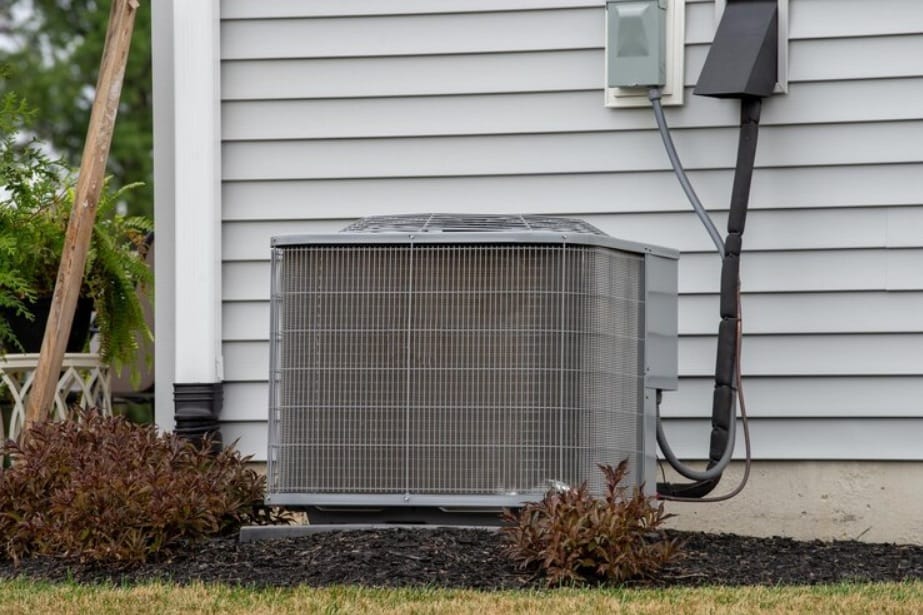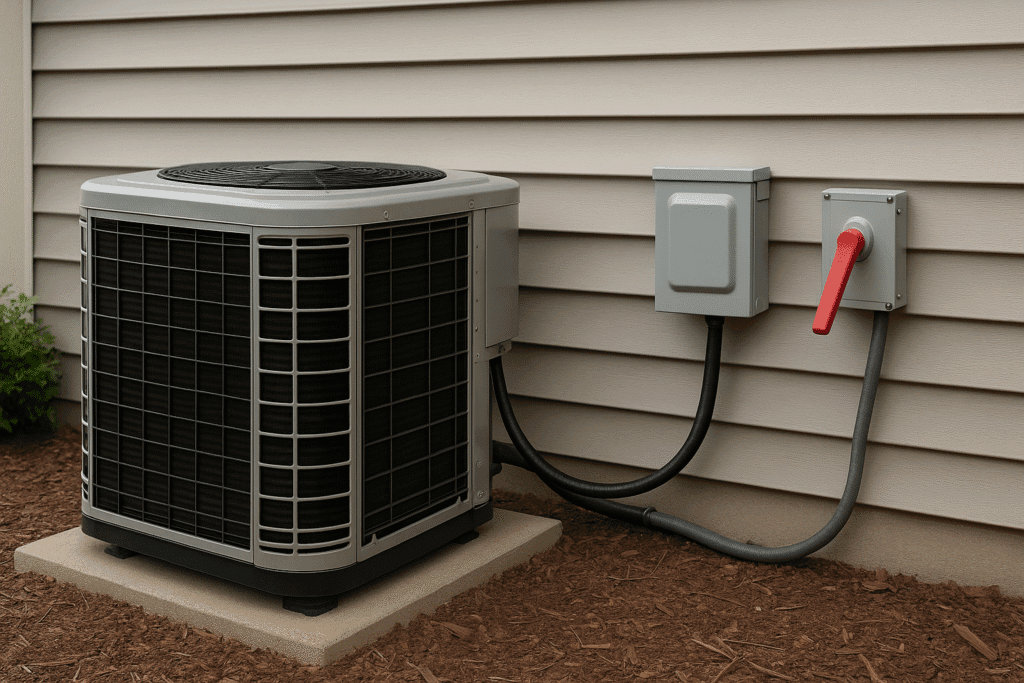When it comes to your home’s HVAC system, safety is paramount. One key component that plays a crucial role in ensuring this safety is the HVAC Disconnect Switch for your AC unit.
But what exactly is a disconnect box?

In simple terms, it’s a safety switch that allows you to quickly disconnect the power to your AC unit. This feature is especially important during emergencies or when maintenance work is being carried out on your system.
Understanding how this component works and why it’s necessary can help you maintain a safe and efficient HVAC system.
In this article, we’ll delve into the world of disconnect boxes, explaining their function, importance, and how to use them.
Whether you’re a small business owner, a busy stay-at-home mom, or someone working from home, this guide will provide you with valuable insights to help you manage your HVAC system effectively and safely.
Understanding the Disconnect Box for AC Units
A disconnect box for an AC unit is a simple yet vital device. It provides a quick way to cut power to your air conditioning unit. This is essential for maintenance and during emergencies, ensuring safety for all.
The disconnect box is typically located near your outdoor AC unit. It houses a switch or lever that lets you disconnect the electrical power. This allows for safe repairs or inspections without any electrical hazards. By having a disconnect box, you’re protecting both your equipment and anyone who services it. Ensuring it’s in good working condition is crucial for your HVAC system’s longevity and safety.
The Role of a Disconnect Switch in HVAC Safety
The disconnect switch is a critical component in HVAC safety. It allows immediate power shut-off during repairs or emergencies, preventing injuries and equipment damage. By disconnecting the power, you’re minimizing the risk of electrical shocks. This is especially crucial during unexpected system malfunctions.
Beyond emergencies, a disconnect switch is invaluable for routine maintenance. Technicians rely on it to safely service your HVAC system. This small device can make a big difference in ensuring that your air conditioning unit is both safe and efficient. Its presence offers peace of mind for homeowners and service professionals alike.
Legal Requirements and Compliance
Having a disconnect switch isn’t just a safety recommendation—it’s often a legal requirement. Building codes in many regions mandate the presence of an AC unit disconnect box. These regulations exist to protect homeowners and service personnel.
Compliance with these codes ensures your safety and avoids potential fines. It’s essential to check local guidelines to confirm your setup meets the standards. Staying informed about these requirements keeps your HVAC system both legal and safe.
Types of Disconnect Switches for AC Units
Disconnect switches come in several types, each suited to different needs. The most common ones are fusible and non-fusible switches. Fusible disconnects provide an added layer of protection by interrupting the circuit if needed.
Non-fusible switches simply act as a manual on/off switch. They’re efficient and straightforward for general use. Determining which type suits your needs depends on your HVAC system’s specifications and safety requirements.
Pull-out and lever-type disconnects are popular for residential use. Pull-out disconnects are easy to operate and replace. Meanwhile, lever-type switches offer convenience with a simple flip mechanism. Consulting with a professional can guide you toward the best choice for your specific system.
How to Use a Disconnect Switch: A Step-by-Step Guide
Knowing how to operate a disconnect switch is essential for safety. Start by locating the switch near your AC unit. It’s typically housed in a metal box on an exterior wall.
Before making any moves, ensure the area is dry. Electricity and moisture don’t mix well. It’s crucial for safety and preventing damage.
Here’s a quick guide to using a disconnect switch safely:
- Turn off all active electrical devices that might be connected.
- Locate the disconnect box and open the cover.
- Pull out the switch handle or flip the lever to the “OFF” position.
- Wait a few moments to ensure the unit powers down completely.
- Close the box securely to keep it protected from the elements.
It’s important to follow these steps in emergencies or maintenance. A disconnect switch safeguards you and your equipment. For complex issues, it’s always wise to contact a professional for assistance. This ensures your HVAC system continues to run smoothly.
The Importance of a Disconnect Switch During Maintenance
A disconnect switch plays a critical role during AC maintenance. It prevents electrical accidents by cutting power to the unit. This ensures that technicians can work safely and efficiently.

Without a disconnect switch, maintenance can become risky. The switch provides peace of mind, allowing professionals to focus on the task without fear of electrical hazards. Maintaining a functional disconnect switch is vital for both safety and the longevity of your HVAC system.
Identifying if Your AC Unit Has a Disconnect Switch
To determine if your AC unit includes a disconnect switch, begin by inspecting the unit. Look for a box located near the AC or on the wall.
If you spot a box with electrical markings, it likely contains the disconnect switch. If you’re uncertain or unable to find it, consulting your HVAC manual or contacting a professional can provide clarity.
When to Contact a Professional for Disconnect Box Issues
If you’re experiencing frequent tripping of the disconnect box, it’s time to call a professional. This might indicate underlying electrical problems that need expert attention.
Another sign to reach out is if the disconnect box makes unusual noises or shows signs of damage. In such cases, having a skilled technician assess the situation ensures your safety and prevents further complications. It’s wise to entrust these issues to professionals rather than attempting a DIY fix.
Maintaining Your AC Unit’s Disconnect Switch
Regular maintenance checks on your disconnect switch can prevent unwanted surprises. Inspect the switch for any visible signs of wear or damage.
Ensure that the connections remain tight and corrosion-free. It’s crucial to keep the area around the disconnect box clear from debris and moisture to prevent malfunctions and ensure long-term reliability.
The Benefits of a Service Disconnect for Air Conditioners
A service disconnect provides a critical layer of safety for your home and HVAC system. It allows for quick and safe shutdowns during maintenance or emergencies.
This switch minimizes risks of electrical shock, ensuring safety for both homeowners and technicians. The convenience of an easily accessible switch also means maintenance can be performed efficiently, preventing prolonged downtime.
By having a service disconnect, you invest in the longevity of your system. This small addition can lead to fewer repairs, ultimately saving money and stress in the long run.
Conclusion: Ensuring Safety and Efficiency with an HVAC Disconnect Switch

Having a disconnect switch is essential for the safety and smooth running of your HVAC system. It provides peace of mind during maintenance, emergencies, and everyday operations. Prioritizing this feature means safeguarding your home, reducing risks, and enhancing the lifespan and efficiency of your HVAC investment.


